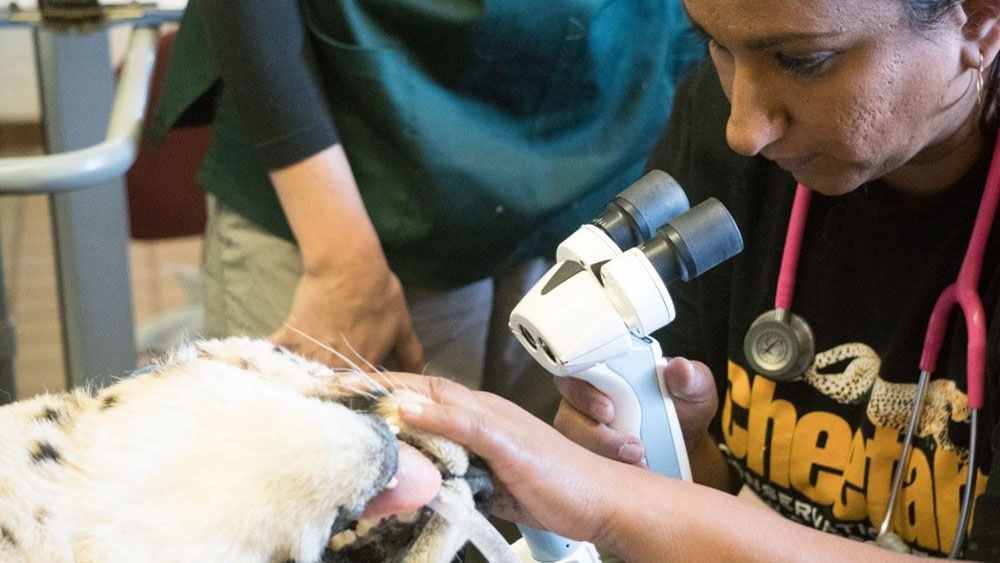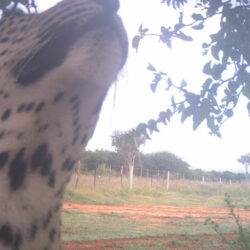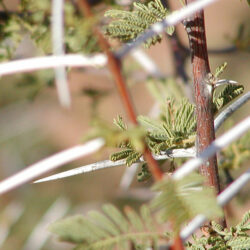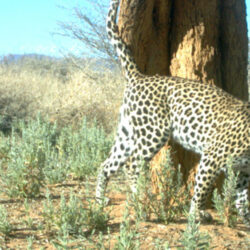Genetics Research: This is How We Do It in Africa
-

- by Armaghan (Army) Nasim July 24, 2018

I currently am a veterinary student in the United States at the Virginia-Maryland Regional College of Veterinary Medicine at Virginia Tech and plan on focusing my career on international wildlife medicine.
I also have a keen interest in infectious diseases that affect wildlife, especially zoonotic diseases that can also affect humans. As a result, I am also working on a concurrent Master of Public Health.
I have been fascinated with big cats, including the cheetah, and Africa since I was a young child. Research plays an integral role in wildlife medicine and conservation and is a growing area of veterinary medicine. My clinical rotations began this summer, giving me an ideal opportunity to complete some of these rotations in Africa. I had been aware of CCF for a few years and contacted them immediately to see if there were any opportunities here for me to complete a preceptorship in the genetics lab with the ability to spend some time in the veterinary clinic as well.
After discussions with Dr. Anne Schmidt-Küntzel, I became interested in conducting a pilot study that involved the extraction of DNA from ticks to look for the presence of Babesia. Babesia is a protozoal (Apicomplexan) parasite that is transmitted via ticks. There are over 100 species of Babesia and can cause a disease known as babesiosis in a multitude of different wild and domestic animals including cheetahs. The parasite invades and damages red blood cells resulting in anemia in the animal.
In 2010, another species of Babesia, Babesia lengau, was identified in cheetahs. The specific tick vectors for this species of Babesia has not yet been determined. My project focused on developing a protocol to extract DNA from a variety of ticks that have been collected from cheetahs at CCF over the past 20 years to search for the presence of Babesia in these ticks. Once we are able to positively identify the presence of Babesia in some of these ticks, we would be able to determine which species of ticks carry this parasite and therefore, would be vectors.
A further complication with the DNA extraction was that the ticks that were pulled from cheetahs over the past 20 years were stored in methylated spirits. Ideally, specimens are stored in ethanol but ethanol is rather expensive and genetic labs here have limited resources. In order to determine if the methylated spirits had any adverse effects on DNA, I collected ticks from the goat farm here at CCF and stored them in both ethanol and methylated spirits. I developed a timetable of when DNA extractions should be completed on these ticks to see if long term storage in methylated spirits negatively effects DNA and the extraction of DNA.


I was able to positively extract and identify Babesia from some of the ticks collected from cheetahs and was able to identify the genus of these ticks. This project was a pilot study and I am hoping that CCF’s genetics lab will receive the funding to be able to continue this study with a large number of collected ticks.
While I spent most of my time in the lab working on my Babesia project, I was able to get involved in other projects in the lab as well. I was able to assist in collecting samples from a genet had been killed during a necropsy. Samples from the digestive system of all carnivores in this area are collected when possible to determine their natural diets. Additionally, I was able to assist in collecting anal gland secretions from cheetahs during physicals to determine if the scat detection dogs at CCF were detecting these secretions when finding and indicating cheetah scat.
During my time at CCF, I was also able to spend quite a bit of time in the veterinary clinic. I was able to assist in multiple cheetah workups and physicals. I was fortunate enough to be able to assist and learn from a visiting veterinary dentist and visiting veterinary ophthalmologist. In addition to cheetah workups, I was able to observe dog spay and neuters, a tongue biopsy on a dog, goat de-worming and general physicals on the goat and sheep herd.
For me personally, the greatest value of this internship was in experiencing first hand some of the challenges with conducting this level of research and medicine in a developing country that has limited resources. “Let me show you how we do it in Africa” became a common phrase that made me laugh and often left me in awe of the ingenuity that the lack of resources created. After working in veterinary clinics, including in wildlife centers, and in a bacteriology lab in the United States, I was not used to having a limited amount and types of medication and lab equipment. I was constantly amazed at the ability of the lab staff and veterinary staff to find a way around these limitations without sacrificing the quality of their work and results.
Being surrounded by students and professionals in all aspects of wildlife conservation, from geneticists to ecologists, veterinary staff to dog trainers and farmers, from all over the globe, was an amazing experience. The successful integration of the different aspects of wildlife conservation was eye opening and inspiring. I am sad to leave CCF but look forward to coming back!




